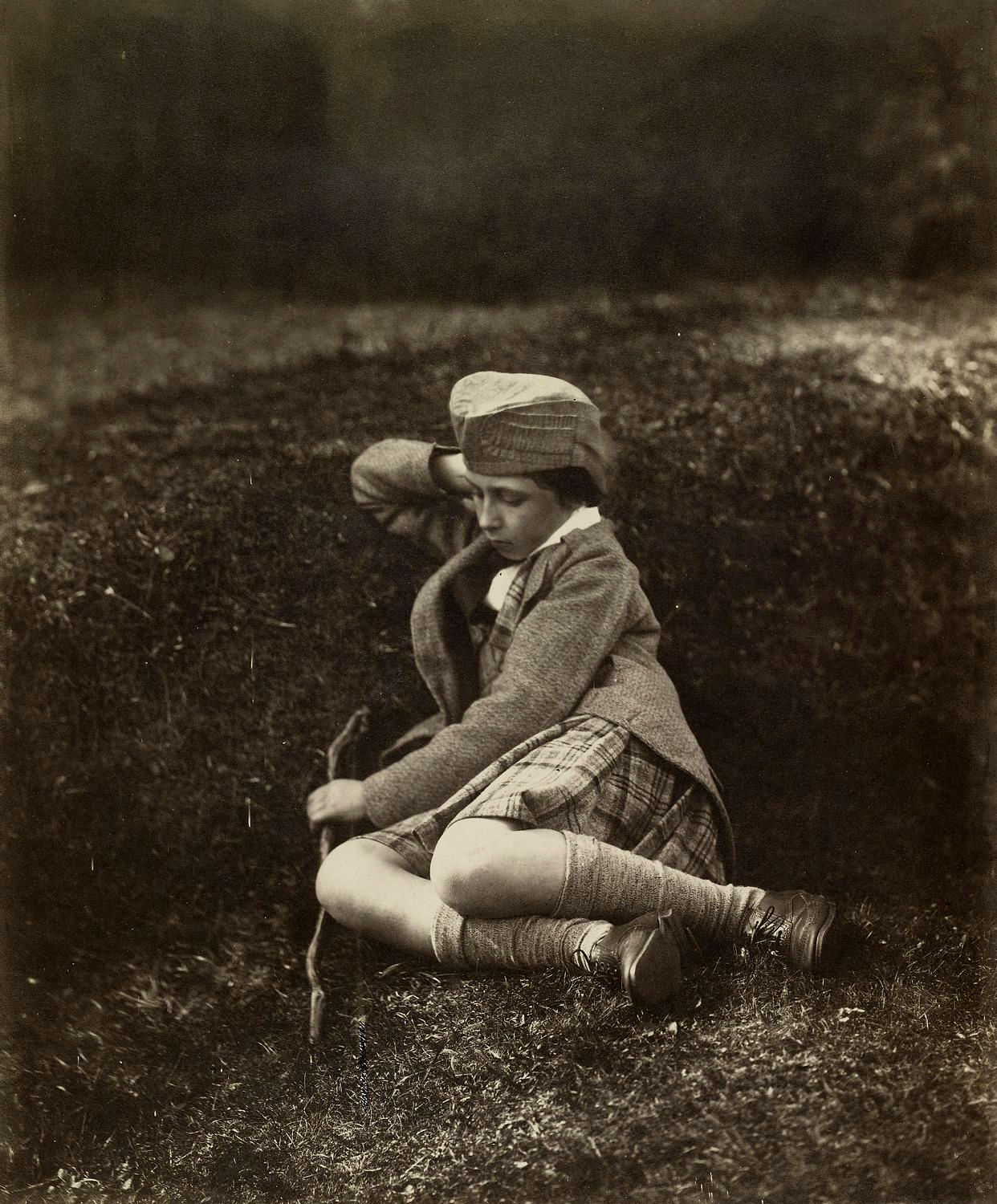1. Early life
Prince Alfred was born on 6 August 1844 at Windsor Castle in Windsor, Berkshire, England. He was the second son and fourth child of the reigning British monarch, Queen Victoria, and her husband, Prince Albert of Saxe-Coburg and Gotha, the second son of Ernest I, Duke of Saxe-Coburg and Gotha. Affectionately nicknamed "Affie," he was second in the line of succession to the British throne at birth, directly behind his elder brother, Albert Edward, Prince of Wales.
Alfred was baptised by the Archbishop of Canterbury, William Howley, at the Private Chapel in Windsor Castle on 6 September 1844. His godparents included his mother's first cousin, Prince George, Duke of Cambridge (represented by his father, the Prince Adolphus, Duke of Cambridge); his paternal aunt, the Duchess of Saxe-Coburg and Gotha (represented by Alfred's maternal grandmother, the Duchess of Kent); and his maternal uncle, the Prince of Leiningen (represented by the Duke of Wellington).
Alfred remained second in line to the British throne from his birth until January 1864, when his older brother Albert Edward and his sister-in-law Alexandra had their first child, Prince Albert Victor. This event shifted Alfred to third in line, and his position in the order of succession was further demoted as the Prince and Princess of Wales continued to have children.
3. Duke of Edinburgh and world tours
Upon being created a British duke, Alfred embarked on a series of significant royal voyages that took him across the globe, enhancing diplomatic ties and leaving a lasting impression.
3.1. Creation as Duke of Edinburgh
On 24 May 1866, as part of the Queen's Birthday Honours, Prince Alfred was formally created Duke of Edinburgh, Earl of Ulster, and Earl of Kent by Queen Victoria and an Act of Parliament. This creation came with an annuity of 15.00 K GBP granted by Parliament. He officially took his seat in the House of Lords on 8 June of the same year, marking his entry into the upper chamber of the British Parliament.
3.2. Voyages and incidents
While still commanding the Galatea, the Duke of Edinburgh began his extensive voyage around the world, departing from Plymouth on 24 January 1867. His journey took him to many distant lands, commencing with his departure from Gibraltar on 7 June 1867. He reached the Cape of Good Hope on 24 July, the remote island of Tristan da Cunha on 5 August 1867, and made a royal visit to Cape Town on 24 August 1867, having landed at Simon's Town earlier. He then arrived at Glenelg, South Australia, on 31 October 1867.
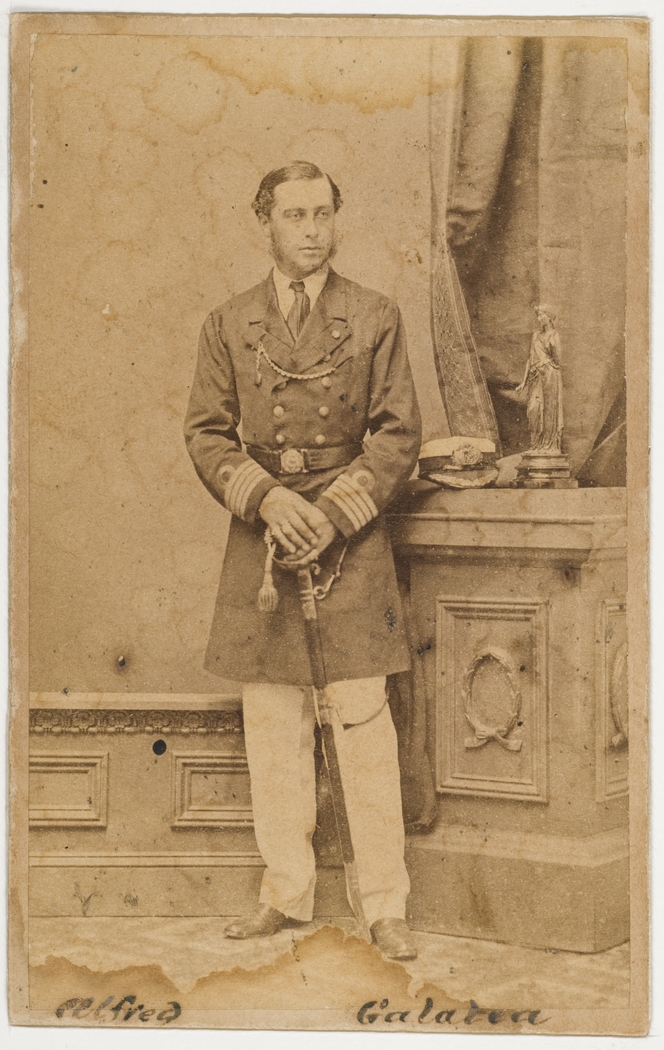
As the first member of the British royal family to visit Australia, Alfred was met with immense enthusiasm. During his stay of nearly five months, he toured extensively, visiting major cities such as Adelaide, Melbourne, Sydney, Brisbane, and Tasmania. His presence was commemorated by the naming of several institutions in his honour, including Prince Alfred College, The Alfred Hospital, and Royal Prince Alfred Hospital. He also laid the cornerstones for new town halls in Sydney and Melbourne, buildings that remain in use today.
On 12 March 1868, during his second visit to Sydney, Alfred was invited to a picnic at the beachfront suburb of Clontarf, an event organized to raise funds for the Sydney Sailors' Home. During this function, he survived an assassination attempt when he was wounded in the back by a revolver fired by Henry James O'Farrell. The shot, fired at point-blank range, ricocheted off one of the metal clips on Alfred's trouser braces, narrowly missing his spine. For the next two weeks, he received care from six nurses trained by Florence Nightingale, led by Matron Lucy Osburn, who had just arrived in Australia in February 1868.
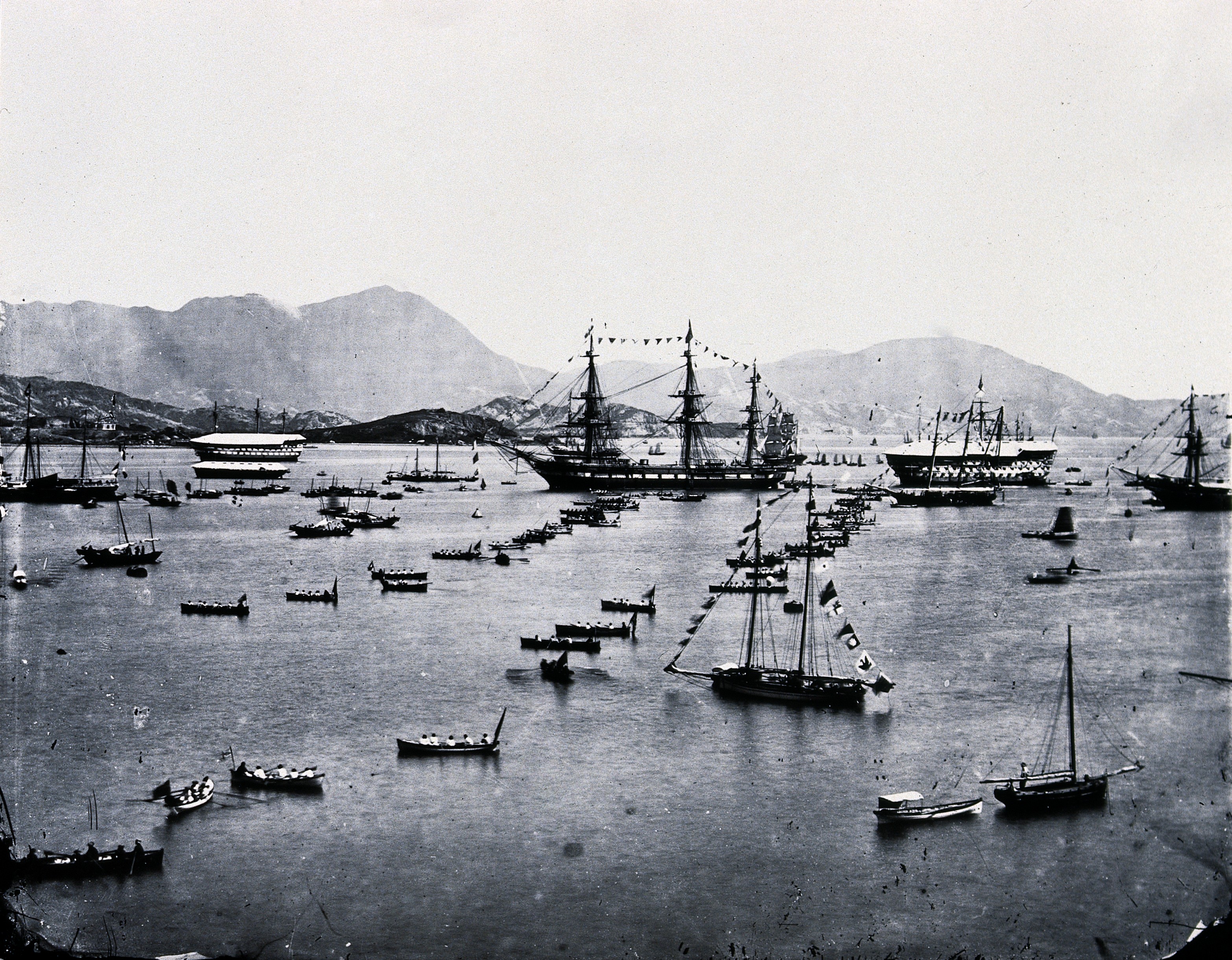
In the violent struggle that ensued after Alfred was shot, William Vial managed to wrestle the gun away from O'Farrell before other bystanders assisted. Vial, a master of a Masonic Lodge who had helped organize the picnic, was presented with a gold watch for his role in securing Alfred's life. Another bystander, George Thorne, sustained a foot wound from O'Farrell's second shot. O'Farrell was promptly arrested at the scene, quickly tried, convicted, and hanged on 21 April 1868. On the evening of 23 March 1868, leading citizens of Sydney voted to erect a memorial building "to raise a permanent and substantial monument in testimony of the heartfelt gratitude of the community at the recovery of HRH." This initiative led to a public subscription that funded the construction of Royal Prince Alfred Hospital.
Alfred swiftly recovered from his injury and was able to resume command of his ship, returning home in early April 1868. He reached Spithead on 26 June 1868, after an absence of seventeen months.
His travels continued with a visit to Hawaii in 1869, where he spent time with the royal family and was presented with leis upon his arrival. He was also the first member of the royal family to visit New Zealand, arriving in 1869 on HMS Galatea, where he spent a month residing in Pakuranga. Furthermore, he made history as the first European prince to visit Japan, being received in an audience by the teenaged Emperor Meiji in Tokyo on 4 September 1869, shortly after the Meiji Restoration.
The Duke's subsequent major voyage took him to India, where he arrived in December 1869, and Ceylon (now Sri Lanka), which he visited the following year. In both countries, and in Hong Kong, which he visited en route, he was the first British prince to set foot on their soil. The native rulers of India competed with one another in the magnificence of their entertainments during his three-month stay. In Ceylon, a reception was hosted for him, at the request of the British, by Charles Henry de Soysa, the wealthiest man in Ceylon, at his private residence, which was subsequently renamed Alfred House with permission. Reports indicate that Alfred dined off gold plates using gold cutlery inlaid with jewels.
4. Marriage and family
Alfred's romantic prospects were a subject of careful consideration by Queen Victoria, leading to various potential matches before his eventual union and the establishment of his own family.
4.1. Potential matches
In 1862, Queen Victoria expressed her desire for Alfred to marry Princess Dagmar of Denmark in a letter to her eldest daughter, Victoria, Princess Royal. The Queen noted her awareness that the Emperor of Russia had intentions of proposing for Dagmar or her sister, Alix, for his son, Tsarevich Nicholas Alexandrovich. She stated she would regret any decision regarding Dagmar before her daughter had seen her, as it would reduce a potential match for Alfred.
However, Queen Victoria ultimately decided against the match due to the political tensions between Germany and Denmark over the disputed territories of Schleswig-Holstein, especially given Alfred's position as heir to the Duchy of Saxe-Coburg. She communicated to the Princess Royal: "Respecting Dagmar, I do not wish her to be kept for Affie. Let the Emperor have her." Princess Dagmar was initially engaged to Tsarevich Nicholas; however, he tragically died on 22 April 1865. His dying wish was that Dagmar should marry his younger brother, the future Alexander III. Alexander and Dagmar subsequently married, and she became Empress of Russia.
The Queen also considered Grand Duchess Olga Constantinovna of Russia as a prospective wife for Alfred. She lamented to the Princess Royal that "It is a great pity that Sanny's charming daughter is a Greek [Orthodox]- she would do so well." By 1867, Queen Victoria conveyed to her eldest daughter that she had "thought and hoped at one time for dear little Olga, who is now to marry King George."
4.2. Marriage to Grand Duchess Maria Alexandrovna
During a visit to his sister Alice in August 1868, Alfred met Grand Duchess Maria Alexandrovna of Russia, who was then fourteen years old. Princess Alice was married to Maria Alexandrovna's first cousin. At the time, the Grand Duchess was visiting her maternal relatives, the Princes of Battenberg, in Jugenheim.
On 23 January 1874, the Duke of Edinburgh married Maria Alexandrovna, the second (and only surviving) daughter of Emperor Alexander II of Russia and his first wife Princess Marie of Hesse and by Rhine, at the Winter Palace, St Petersburg. To commemorate this royal union, the English bakery Peek Freans created the now internationally popular Marie biscuit, with the Duchess's name imprinted on its top.
The Duke and Duchess of Edinburgh made their public entry into London on 12 March. However, their marriage was not a happy one, and the Duchess was perceived as haughty by London Society. She was surprised to discover that she had to yield precedence to the Princess of Wales and all of Queen Victoria's daughters. Maria Alexandrovna demanded that she take precedence before the Princess of Wales (the future Queen Alexandra) because she considered the Princess of Wales's family, the Danish royal family, to be inferior to her own. Queen Victoria firmly refused this demand but granted her precedence immediately after the Princess of Wales. Maria Alexandrovna's father provided her with the then-staggering sum of 100.00 K GBP as a dowry, in addition to an annual allowance of 32.00 K GBP.
5. Reign as Duke of Saxe-Coburg and Gotha
Alfred's assumption of the ducal throne marked a significant transition from a British royal to a German sovereign, a period characterized by efforts to adapt to his new role and profound personal sorrow.
5.1. Succession to the Duchy
Upon the death of his paternal uncle, Ernest II, Duke of Saxe-Coburg and Gotha, on 22 August 1893, the Duchy of Saxe-Coburg and Gotha devolved to Alfred. This succession occurred because his elder brother, the Prince of Wales, had formally renounced his right to the succession before he married, with the encouragement of Alfred's ambitious wife, Grand Duchess Maria Alexandrovna.
Upon inheriting the ducal throne, Alfred surrendered his British allowance of 15.00 K GBP a year and relinquished his seats in the House of Lords and the Privy Council. However, he retained the 10.00 K GBP annuity granted upon his marriage, which was intended to maintain Clarence House as his London residence.
5.2. Ducal administration
Initially, Alfred was regarded with some coldness in the Duchy, perceived as a "foreigner." However, over time, he gradually gained popularity among his new subjects. Despite reportedly speaking only broken German to the end of his life, he respected local customs and administrative practices, earning the good opinion of his subjects by the time of his death in 1900. His seven-year reign saw him gradually integrate into the German duchy, overcoming initial reservations from the populace.
5.3. Tragedy of his son
A profound personal tragedy deeply affected Alfred during his reign. His only son and heir, Alfred, Hereditary Prince of Saxe-Coburg and Gotha, became embroiled in a scandal involving his mistress. In January 1899, amidst his parents' twenty-fifth wedding anniversary celebrations at the Schloss Friedenstein in Gotha, the young prince apparently shot himself with a firearm. He survived the initial incident, and his embarrassed mother sent him to Merano (Meran) to recover. However, he died there two weeks later, on 6 February. The death of his son devastated Duke Alfred.
6. Death and succession
Alfred died of throat cancer on 30 July 1900, at a lodge adjacent to Schloss Rosenau, the ducal summer residence located just north of Coburg. He was buried at the ducal family's mausoleum in the Friedhof am GlockenbergGerman in Coburg on 4 August 1900.
Due to the prior deaths and renunciations of other male heirs, the succession to the ducal throne of Saxe-Coburg and Gotha bypassed his younger brother, Prince Arthur, Duke of Connaught and Strathearn, and Arthur's son, Prince Arthur of Connaught, both of whom had renounced their succession rights to preserve their positions in the British line of succession. Consequently, Alfred was succeeded by his nephew, Prince Charles Edward, Duke of Albany (1884-1954), who was the posthumous son of Alfred's youngest brother, Prince Leopold, Duke of Albany.
Alfred was survived by his mother, Queen Victoria, who had already outlived two of her children. She herself passed away six months after Alfred's death. Queen Victoria dedicated a memorial in the form of a Celtic cross to Alfred in the grounds of Balmoral Castle, which was erected shortly before her own demise.
After Alfred's death, his widow, Grand Duchess Maria Alexandrovna, gifted his extensive collection of glass and ceramic ware, valued at 500.00 K DEM (half a million marks), to the Veste Coburg, the imposing fortress situated on a hilltop above Coburg.
7. Legacy
Alfred's life and royal service left a significant impact, commemorated through numerous geographical and institutional namings, as well as his notable contributions to various fields.
7.1. Geographical and institutional naming
Alfred's extensive royal tours, particularly during his time as Duke of Edinburgh, led to numerous places and institutions being named in his honor across the former British Empire.
In Australia, his name is preserved in institutions such as Royal Prince Alfred Hospital in Sydney, The Alfred Hospital in Melbourne, and Prince Alfred College in Adelaide. Geographical features and public spaces also bear his name, including Prince Alfred Park in Sydney, Prince Alfred Square in Parramatta, and the Royal Prince Alfred Yacht Club, now located in the Sydney suburb of Newport. The Alfred Hall in Ballarat was specifically built in 1867 for his visit, and one of the city's suburbs was subsequently renamed Alfredton. Many other streets, avenues, roads, halls, parks, and schools throughout Australia bear his name. He notably laid the cornerstones of new town halls in both Sydney and Melbourne, buildings that continue to serve their original purpose today.
In Barbados, Prince Alfred Street in Bridgetown, the capital, was named in his honor. It extends from the junction with Chapel Street southwards to a car park near the Constitution river, close to the former James Fort.
Canada also features several locales named after him. Prince Alfred Bay in Nunavut and Cape Prince Alfred in the North West Territories were named in his honor. Two islands in Ontario bear his name: one in the St Lawrence River near Brockville, and another in Lake Nipigon north of Thunder Bay. The Prince Alfred Arch, a monument in Tangier, Nova Scotia, marks the precise spot he visited in 1861.
In New Zealand, the small township of Alfredton (near Eketāhuna in the lower North Island) honors the Prince. Alfred Street in central Auckland was also named after him. The Bay of Plenty settlement of Galatea is named after his ship, HMS Galatea. Furthermore, Mount Alfred in Wellington-adjacent to Mount Victoria (named after his mother) and Mount Albert (after his father)-is dedicated to him.
South Africa holds numerous commemorations of Prince Alfred's visits. He sailed into Port Elizabeth on 6 August 1860 as a midshipman on HMS Euryalus, celebrating his 16th birthday among its citizens. Seven years later, he arrived in Simon's Town as the Captain of HMS Galatea. In Port Elizabeth, there is a Prince Alfred's Terrace. The Alfred Rowing Club, established in 1864 and housed under the pier at Table Bay, was named after him and is recognized as the oldest organized sporting club in South Africa. The opening ceremony of the National Library of South Africa was performed by Prince Alfred in 1860, and an impressive portrait of him still hangs in its main reading room. Port Alfred, on the Kowie River in the Eastern Cape, originally named Port Frances, was renamed in his honor. Among the passes built in South Africa by the renowned engineers Andrew Geddes Bain and his son Thomas, Prince Alfred's Pass remains a favorite for its scenic variety through unspoiled landscapes. In Simon's Town, the Prince Alfred Hotel, built in 1802, was renamed after his 1868 visit to the Cape Province. In Cape Town, during his 1868 visit, Prince Alfred ceremonially tipped the first load of rock to begin the construction of the Breakwater, a protective seawall for the new Cape Town Harbour, which has since been redeveloped into the popular Victoria & Alfred Waterfront. Prince Alfred Street can also be found in Pietermaritzburg, Queenstown, Grahamstown, and Caledon. The Port Elizabeth Chapter of the Memorable Order of Tin Hats, a veterans association, is known as the Prince Alfred Shellhole. A small town in the Western Cape province, Prince Alfred Hamlet, is also named after him.
In the United Kingdom, Edinburgh of the Seven Seas, the remote settlement on Tristan da Cunha, a British Overseas Territory, was named after Alfred following his visit to the islands in 1867 as Duke of Edinburgh. The species Manta alfredi is commonly known as Prince Alfred's manta ray.
7.2. Other contributions
Beyond his official duties and royal travels, Alfred was known for his interests and significant contributions to cultural and scientific pursuits. He was a keen collector of glass and ceramic ware, and after his death, his widow donated his collection, valued at 500.00 K DEM, to the Veste Coburg.
Alfred was also very fond of music and played a prominent role in the establishment of the Royal College of Music, founded in 1882. Although a keen violinist, he possessed limited skill; Sir Henry Ponsonby famously remarked after hearing him play at a dinner party that the "Fiddle out of tune and noise abominable."
He was a notable stamp collector within the British royal family, winning election as honorary president of The Philatelic Society, London in 1890. His passion for philately may have influenced his nephew, George V, who greatly benefited from Alfred's collection after the Prince of Wales (later Edward VII) purchased it. The merging of Alfred's and George's collections formed the nucleus of the renowned Royal Philatelic Collection. It is also noted that he was a Freemason.
8. Titles, honours, and arms
Alfred held various formal distinctions, accolades, and heraldic symbols throughout his life, reflecting his evolving status as a British prince, a British duke, and a German sovereign.
8.1. Titles and styles
- 6 August 1844 - 24 May 1866: His Royal Highness The Prince Alfred
- 24 May 1866 - 23 August 1893: His Royal Highness The Duke of Edinburgh
- 23 August 1893 - 30 July 1900: His Royal Highness The Duke of Saxe-Coburg and Gotha
8.2. British honours
- KG: Royal Knight Companion of the Garter, 10 June 1863
- KT: Extra Knight of the Thistle, 15 October 1864
- KP: Knight of St. Patrick, 14 May 1880
- GCB: Knight Grand Cross of the Bath (military), 25 May 1889
- GCSI: Knight Grand Commander of the Star of India, 7 February 1870
- GCMG: Knight Grand Cross of St Michael and St George, 29 June 1869
- GCIE: Knight Grand Commander of the Indian Empire, 21 June 1887
- GCVO: Knight Grand Cross of the Royal Victorian Order, 24 May 1899
- PC: Privy Counsellor, 1866-1893
- KStJ: Knight of Justice of St. John, 27 March 1896
- ADC: Personal aide-de-camp to Queen Victoria, 9 December 1882
8.3. Foreign honours
- Kingdom of Portugal:
- Grand Cross of the Tower and Sword, 25 November 1858
- Grand Cross of the Sash of the Two Orders, 7 November 1889
- Three Orders, 28 February 1894
- Ernestine duchies: Grand Cross of the Saxe-Ernestine House Order, June 1863; Joint Grand Master, 22 August 1893
- Belgium: Grand Cordon of the Order of Leopold (military), 15 August 1863
- Saxe-Weimar-Eisenach: Grand Cross of the White Falcon, 4 May 1864
- Kingdom of Prussia:
- Knight of the Black Eagle, 7 May 1864; with Collar, 1883
- Grand Commander's Cross of the Royal House Order of Hohenzollern, 5 December 1878
- Knight of Justice of the Johanniter Order, 1883
- Grand Duchy of Hesse:
- Grand Cross of the Ludwig Order, 15 May 1864
- Grand Cross of the Merit Order of Philip the Magnanimous, with Swords, 6 June 1865
- Knight of the Golden Lion, with Collar, 12 January 1894
- Russian Empire:
- Knight of St. Andrew, May 1865
- Knight of St. Alexander Nevsky, May 1865
- Knight of the White Eagle, May 1865
- Knight of St. Anna, 1st Class, May 1865
- Knight of St. Stanislaus, 1st Class, May 1865
- Nassau: Knight of the Gold Lion of Nassau, July 1865
- Kingdom of Hawaii: Grand Cross of the Order of Kamehameha I, 1865
- Baden:
- Knight of the House Order of Fidelity, 1865
- Grand Cross of the Zähringer Lion, 1865
- French Empire: Grand Cross of the Legion of Honour, June 1867
- Empire of Brazil: Grand Cross of the Southern Cross, 15 July 1867
- Kingdom of Saxony: Knight of the Rue Crown, 15 July 1867
- Mecklenburg: Grand Cross of the Wendish Crown, with Crown in Ore and Diamonds, 28 June 1868
- Austria-Hungary: Grand Cross of the Royal Hungarian Order of St. Stephen, 1874
- Denmark: Knight of the Elephant, 4 July 1875
- Principality of Serbia: Grand Cross of the Cross of Takovo
- Sweden-Norway: Knight of the Seraphim, 24 May 1881
- Netherlands: Grand Cross of the Netherlands Lion, 1 May 1882
- Württemberg: Grand Cross of the Württemberg Crown, 1883
- Ottoman Empire: Order of Osmanieh, Special Class in Diamonds, 1886
- Kingdom of Italy:
- Knight of the Annunciation, 8 June 1887
- Grand Cross of Saints Maurice and Lazarus, 8 June 1887
- Spain:
- Grand Cross of the Order of Charles III, 9 July 1887
- Knight of the Golden Fleece, 17 June 1888
8.4. Arms
As a British prince, Alfred gained the use of the royal arms of the United Kingdom. These arms were charged with an inescutcheon depicting the shield of the Duchy of Saxony, symbolizing his paternal lineage. The entire shield was further differenced by a label argent of three points. The outer points of this label bore anchors azure (blue), while the inner point displayed a cross gules (red).
When Alfred became the Duke of Saxe-Coburg and Gotha, his Saxon arms were essentially his British arms inverted. This meant the ducal arms of Saxony formed the main shield, charged with an inescutcheon of the royal arms of the United Kingdom. This inescutcheon was also differenced with a label argent of three points, retaining the outer points bearing anchors azure and the inner point bearing a cross gules.
| Coat of Arms (British Prince) | Heraldic Shield (British Prince) | Coat of Arms (Duke of Saxe-Coburg and Gotha) | Heraldic Shield (Duke of Saxe-Coburg and Gotha) |
|---|---|---|---|
 |  |  |  |
9. Issue
Alfred and his wife, Grand Duchess Maria Alexandrovna of Russia, had five children, one son and four daughters, all of whom survived infancy except for one stillborn child.
| Image | Name | Birth | Death | Notes |
|---|---|---|---|---|
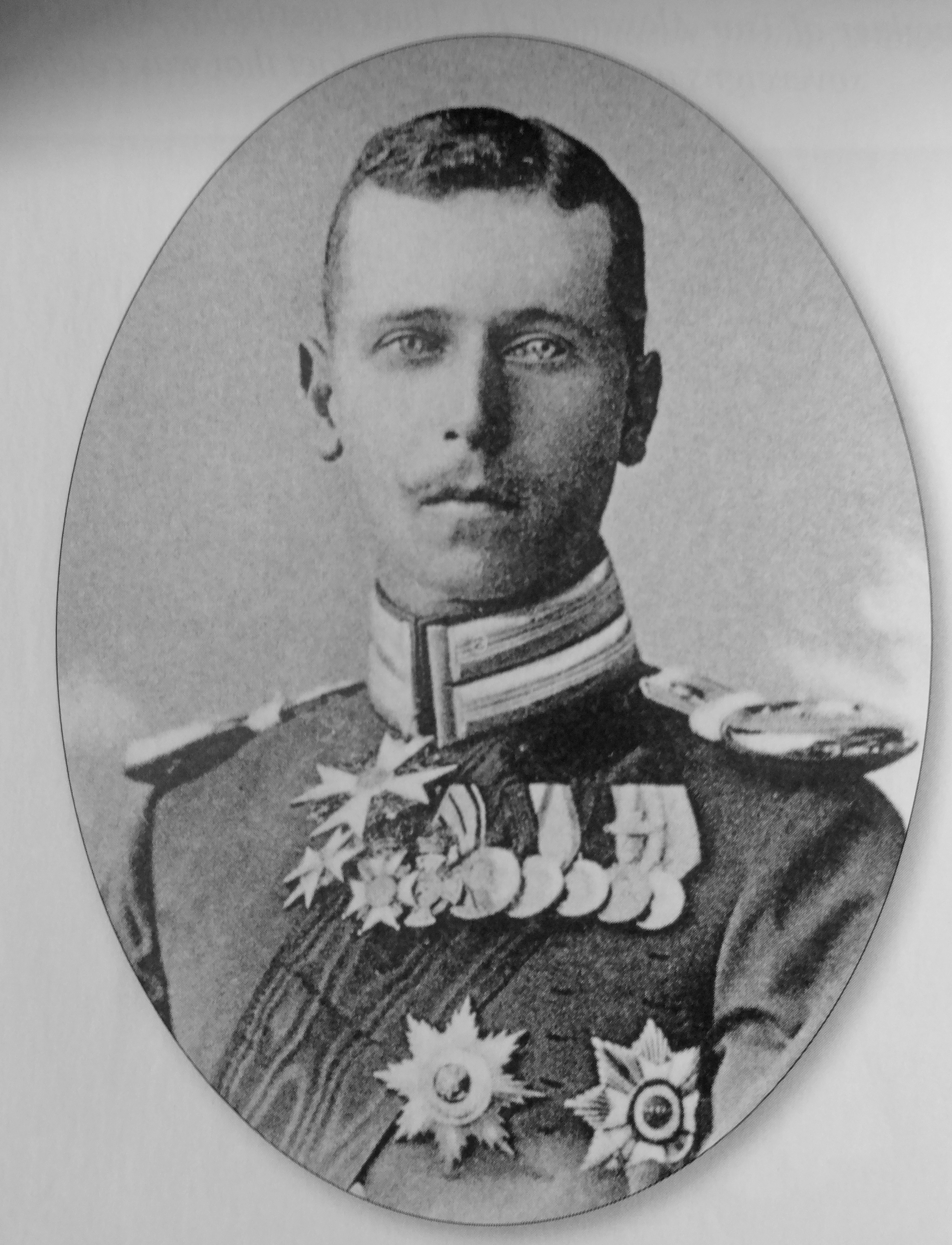 | Prince Alfred Alexander William Ernest Albert | 15 October 1874 | 6 February 1899 | Hereditary Prince of Saxe-Coburg and Gotha from 22 August 1893. Died by suicide with a firearm. |
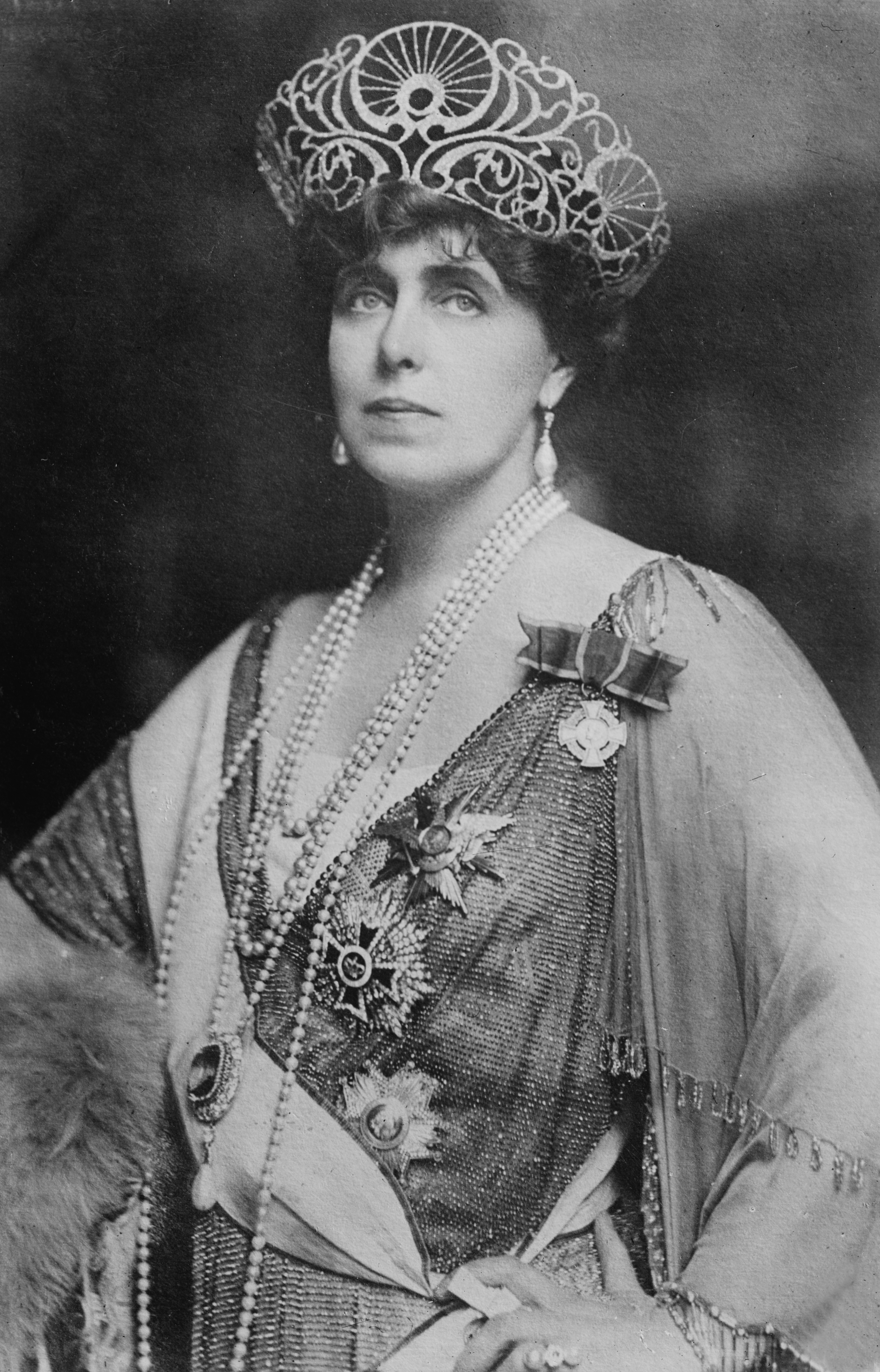 | Princess Marie Alexandra Victoria | 29 October 1875 | 18 July 1938 | Married, 10 January 1893, King Ferdinand I of Romania (1865-1927); had issue (3 sons, 3 daughters). |
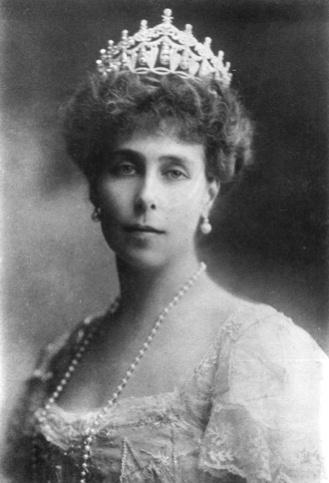 | Princess Victoria Melita | 25 November 1876 | 2 March 1936 | Married (1), 19 April 1894, Ernst Ludwig, Grand Duke of Hesse and by Rhine; had issue (1 daughter); divorced 21 December 1901. Married (2), 8 October 1905, Grand Duke Kirill Vladimirovich of Russia; had issue (1 son, 2 daughters). |
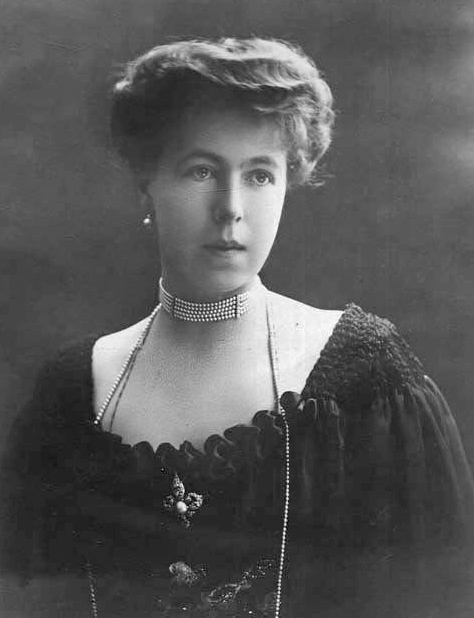 | Princess Alexandra Louise Olga Victoria | 1 September 1878 | 16 April 1942 | Married, 20 April 1896, Ernst II, Prince of Hohenlohe-Langenburg; had issue (2 sons, 3 daughters). |
| Unnamed son | 13 October 1879 | 13 October 1879 | Stillborn. | |
 | Princess Beatrice Leopoldine Victoria | 20 April 1884 | 13 July 1966 | Married, 15 July 1909, Infante Alfonso, Duke of Galliera; had issue (3 sons). |
10. Ancestry
Alfred, Duke of Saxe-Coburg and Gotha, was deeply connected to various European royal families through his distinguished parentage. His parents were Queen Victoria of the United Kingdom and Prince Albert of Saxe-Coburg and Gotha.
His paternal grandparents were Ernest I, Duke of Saxe-Coburg and Gotha, and Princess Louise of Saxe-Gotha-Altenburg. Ernest I was the son of Francis, Duke of Saxe-Coburg-Saalfeld and Countess Augusta of Reuss-Ebersdorf. Louise was the daughter of Augustus, Duke of Saxe-Gotha-Altenburg and Duchess Louise Charlotte of Mecklenburg-Schwerin. Notably, Francis and Augusta were also the parents of Alfred's maternal grandmother, creating a double lineage through this line.
His maternal grandparents were Prince Edward, Duke of Kent and Strathearn, and Princess Victoria of Saxe-Coburg-Saalfeld. Prince Edward was a son of George III of the United Kingdom and Charlotte of Mecklenburg-Strelitz. Princess Victoria of Saxe-Coburg-Saalfeld was the daughter of Francis, Duke of Saxe-Coburg-Saalfeld and Countess Augusta of Reuss-Ebersdorf, making her a sister to Alfred's paternal grandfather, Ernest I. This intricate web of relationships meant that Alfred's parents, Queen Victoria and Prince Albert, were first cousins. This extensive royal lineage linked Alfred directly to numerous prominent dynasties across Europe.
